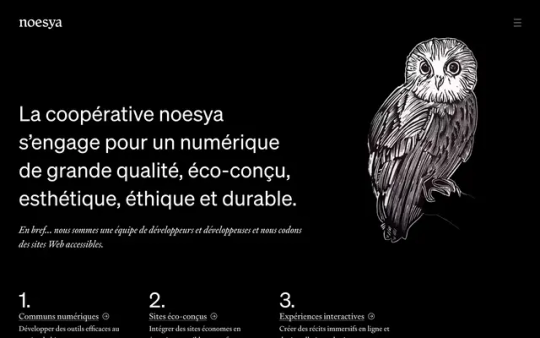#Cooperative
Text
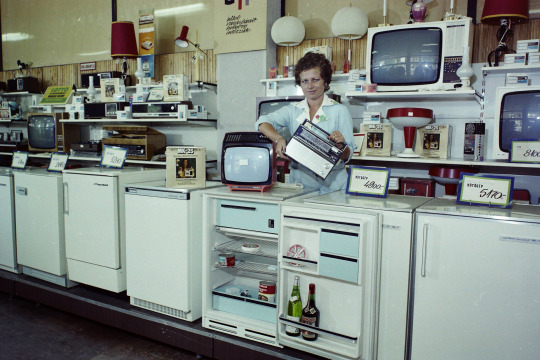
Cooperative electronics shop in Gödöllő, Hungary, 1974.
101 notes
·
View notes
Text
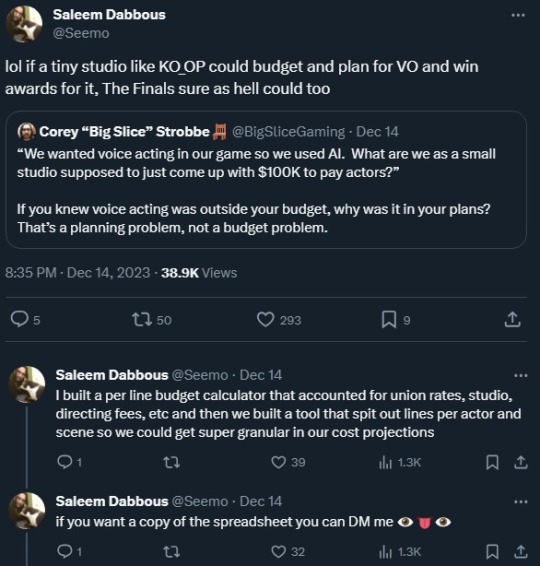
I have a lot of respect and admiration for KO_OP. You know the saying "be the change you want in the world"? They are that saying applied to making videogames. We need more indie cooperatives like them.
#ko_op#ko op#voice acting#goodbye volcano high#gnog#depanneur nocturne#indie games#indie game studio#indie studio#cooperative#video game making#video game development#fuck ai#fuck ai voice acting#voice actors#video games
111 notes
·
View notes
Text
KO_OP's studio director Saleem Dabbous recently shared his presentation about game making cooperatives for the Game Developers Conference (GDC).
Here's my GDC presentation on how @KOOPMode is structured and operated as a ~20 person cooperative! Please let me know if you have any thoughts or questions [x]
if you check this out and think "wow that seems insanely risky fuck that" let me introduce you to every company ever. nothing about the coop structure is more risky than a normal company but a lot of it is more equitable. [x]
coops don't inherently solve any of the risk or privilege required to survive in capitalism. They are another tool to empower workers to own their labour and be more directly in control of their work and to share in the profits of that✌️ [x]
#ko_op#cooperative#game making#game development#goodbye volcano high#gnog#depanneur nocturne#winding worlds#ridiculous fishing#gdc#game dev#game developers conference#video games#indie games#mobile games
21 notes
·
View notes
Text
POV: you’re a communist and you go to check out a queer housing group:
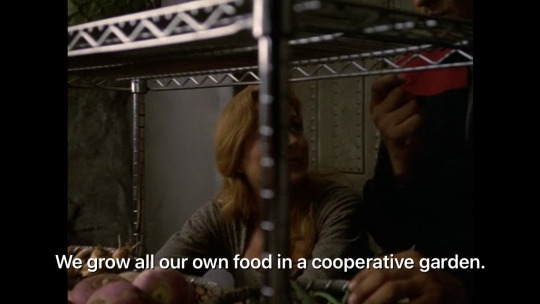
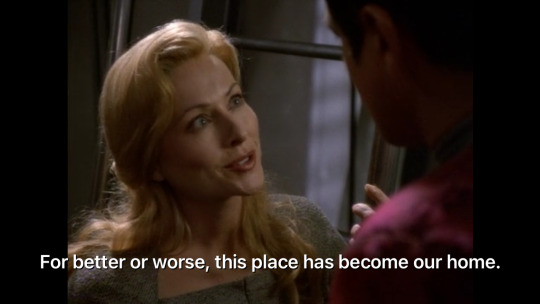
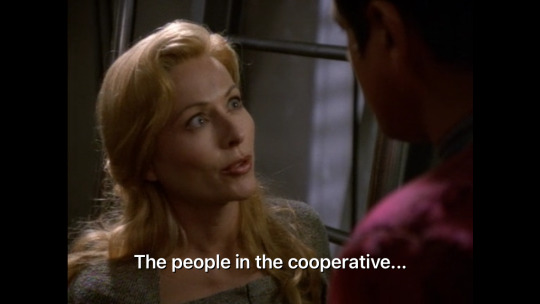
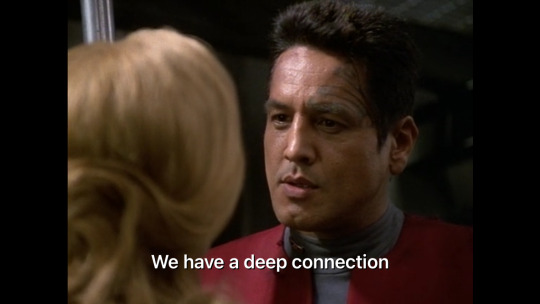

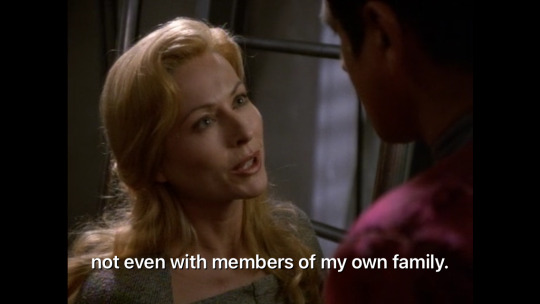



#it’s giving cult#star trek voyager#chakotay#s03e07#unity#memes#cooperative#Star Trek#communism#queer#funny#meme#fully automated luxury gay space communism
14 notes
·
View notes
Text
I hope y’all will take a moment to read this great article about Artisans Cooperative and even share it.
I’m a founding member and look forward to all the great things the future holds for this co-op.
7 notes
·
View notes
Text

Today (10/2/23) is a big day. Artisans Cooperative the artisans-owned Etsy alternative I’ve been helping to build has launched its platform and is OPEN FOR BUSINESS!
I'm thrilled to be a part of this venture and I’d appreciate it so much if you took a moment to browse the shops (and consider starting your #holidayshopping!).
Artisans Cooperative has a unique vision - to build a marketplace that directly connects buyers with authentic artisans. In today’s world, it is so easy to just hop over to platforms like Amazon, make a couple of clicks, buy something cheap, and have it arrive the next day. I’m guilty of doing it, but I truly believe that we need more connection to the things we buy and who we buy from. We can still buy from the comfort of our homes, but now we can be sure that we are buying from a real artisan, one that is part of a community of artisans who are all working to help each other gain economic self determination by keeping more of the income generated by what they make with their own hands I personally love the idea, and that’s what Artisans Cooperative is all about.
And if painting a vision of a world in which artisans are empowered like this doesn’t convince you…how about that crazy fact again: Artisans who are members of Artisans Co-op will take home over 10% more of their hard-earned money compared to other tech platforms.
Today, there are over 50 beautiful shops on the Artisans Co-op platform, and each day the selection will keep growing! Thank you for taking the time to consider supporting this new marketplace — I truly believe that together, we can make a real difference in supporting true craft and sustaining a vibrant artisan community.
I hope you will check out my shop https://artisans.coop/pages/seller-profile/dragontree-emporium . I also hope you will check out the other 50+ beautiful shops. Then I hope you continue to come back again and again, because each day the selection of artisans will keep growing.
In Solidarity,
P.S. We would love your help spreading the word! You can either repost Artisans Co-op’s post (or my post!).
#JoinArtistans
9 notes
·
View notes
Text
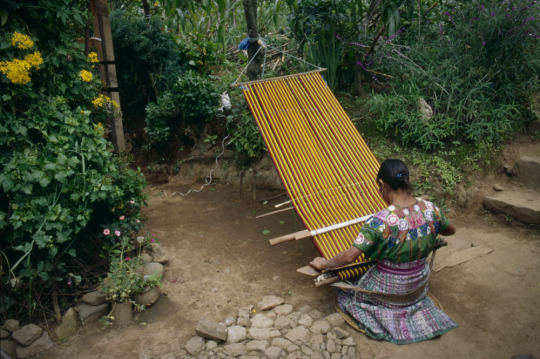
Woman employing a 'backstrap loom' for tension in weaving. Taltemiche, Guatemala.
June, 1995
Ektachrome 100
106 notes
·
View notes
Link
#climate and environment#village scale grid#germany#FELDHEIM#wind turbines#community electricity#renewable energy#solarpunk#both because it's renewable energy done in a literal sunny village#and because the residents decided on and ordered the changes themselves#cooperative
67 notes
·
View notes
Photo
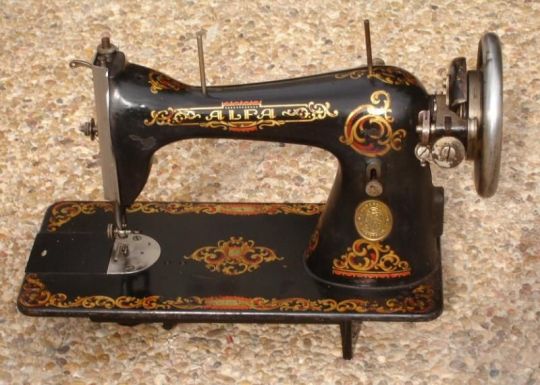
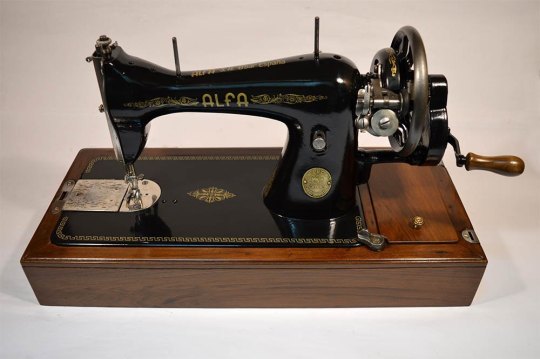

Some of the beautiful sewing machines from the 20s-30s, made by company Alfa in Eibar (Gipuzkoa).
Alfa has a unique history because it was one of the very first cooperatives in Spain. It started in 1920 making guns; in 1925 they started producing sewing machines that became so successful that by 1932 Alfa dedicated exclusively tot hem. In Spain, there was one of their models in almost every home. During WW2 their main competitor, German company Singer, was too busy making weapons, so Alfa started exporting their machines to Europe, producing 50,000 a year and selling to 70 countries.
What’s interesting of this cooperative was the socialist tone of its statutes. Their workers benefited from:
- Funds for social benefic purposes
- Funds for prevention and aid for the workers
- Cooperative housing
- Elementary schools
- Residence
- Library
- Dormitory
- Company store
- Summer camp for the kids
The socialist dream ended in the 80s due to the huge crisis that hit Euskadi that lead the cooperative to fall under a private company. Although they still make sewing machines that’s not their main business: Alfa was redesigned and focused on producing large weldless metal pieces.
Source
#euskadi#euskal herria#basque country#pais vasco#pays basque#eibar#gipuzkoa#alfa#cooperative#sindicalism#labor history#labor movement#sewing machines#history#culture
44 notes
·
View notes
Text
NON NE POSSO PIÙ
Piantedosi: «I migranti sono impiegati in cooperative che li sfruttano».
Già, li sfruttano.
Ma perché li sfruttano? Perché non hanno diritti.
Chi nega a loro i diritti? Destra.
Chi nega a loro la cittadinanza, rendendoli più vulnerabili? Destra.
Chi si oppone a salari dignitosi? Destra
Chi si oppone a qualsiasi misura di integrazione? Destra.
Chi si oppone a qualsiasi politica contro lo sfruttamento? Destra.
Chi propone solo politiche di precarietà? Destra.
Chi chiama "parassiti" e "pesi morti" i beneficiari delle misure di welfare che contrastano i ricatti lavorativi? Destra.
Ma poi dicono che bisogna respingerli nei campi di concentramento libici perché sono preoccupati per lo sfruttamento.
Certo, come no...
Ma basta!
FINE
[L'Ideota]
26 notes
·
View notes
Text

The Spionnids #1 : Introduction to a little-big project of mine
What are they ?
The Spionnids are little fairy-like creatures. They like to hide in shadows and dark places to observe other living beings. They're not dangerous or malicious, just curious by nature. They are extremely discreet, for fear of being discovered ,or, maybe because of their shyness. On average, there are more than ten different kinds of these little creatures in a house.
How do they look ?
There is infinite forms to them, they got a little body for a big head with a mouth or eyes on.
If you got any ideas for a Spionnid form ask me in the tags or in the questions ! I can even made a Spioonids with one of your OC or other characters (series, movie, anime, game...). Thanks !
6 notes
·
View notes
Text

PHOTOSHOOT: MARINA FOR THE GUARDIAN
In a stunning photoshoot captured by the talented Ben Quinton for The Guardian, Marina graced the lens with her timeless beauty and unique style. The Welsh-Greek beauty revealed that her inspiration for this particular shoot came from a cherished source close to her heart—photographs of her own mother from the 1970s.
Styling by Melanie Wilkinson with assistance of Hannah Davidson, makeup by Sharon Ive and hair by Benjamin James Moth.

Marina effortlessly channeled the vintage allure of that era as she posed in a pair of dark navy lyocell and viscose dungarees, courtesy of Urban Outfitter's in-house label Cooperative. The choice of attire showcased her knack for blending retro aesthetics with contemporary fashion, a trademark characteristic that has endeared her to fans worldwide.
Beneath the dungarees, M added a touch of playful sophistication to her look. She layered a charming blue & white micro stripe blouse with a frill hem and contrasting red & white striped collar and cuffs, a creation from the renowned fashion house Red Valentino‘s nautical-inspired Spring/Summer 2015 collection.
Quinton's lens captured Marina's spirit in a series of evocative shots, evoking a sense of nostalgia while highlighting her unique personality and the journey she's taken through her music and style. As she gracefully moved through the shoot, Marina's connection to the past and the present was palpable, making this photoshoot a true testament to her enduring creativity and timeless elegance.
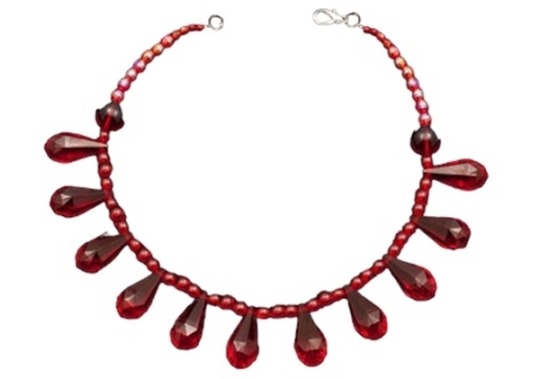
Marina added a touch of elegance and intrigue through carefully chosen accessories. Among them, she adorned herself with a clear red resin teardrop pendants necklace from Pebble London, similar to the piece pictured.
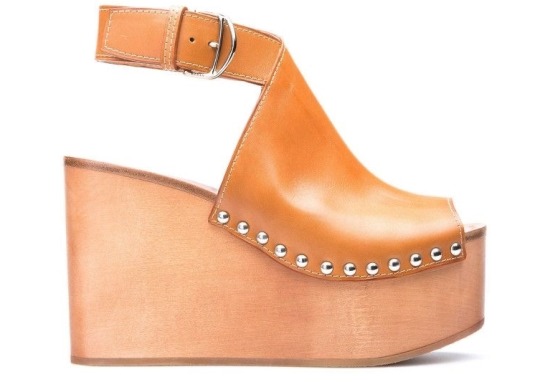
Marina completed her striking look with a pair of the Bally Spring/Summer 2015 Wystan light cuoio leather and wood wedge sandals. These elegant and now-sold-out shoes ($805.00) added a touch of sophistication to her ensemble, perfectly complementing her eclectic style.
#March 2015#Urban Outfitters#Cooperative#Jumpsuits#Valentino#Tops#Pebble London#Jewelry#Bally#Sandals
2 notes
·
View notes
Text

We're not really discussing the Cooperative V Guardians pissing matching, Icon.
You're in the Watchtower, you're not supposed to be. Explain yourself.
#dc#dcu#dc comics#dc universe#superhero#comics#john stewart#green lantern#clark kent#superman#dinah lance#black canary#icon#augustus freeman#green lantern corps#guardians of the universe#cooperative
9 notes
·
View notes
Text
Homesteading for the Homeless:
How Converting Empty Commercial Spaces into Indoor Farms Can Address Food Insecurity and Unemployment
The COVID-19 pandemic has led to high vacancy rates for commercial spaces in metropolitan areas, especially malls and skyscrapers. At the same time, homelessness remains a significant issue, especially in coastal cities. One solution to address both these problems is to convert empty commercial spaces into indoor farms and communal living areas for homeless Americans, owned and operated by their workers.
Indoor farming has emerged as a sustainable and efficient method for producing high yields of crops in a small space, regardless of weather or climate conditions. Vertical farming, a method of growing crops in vertically stacked layers, has gained popularity in recent years as a way to maximize space and improve efficiency. Repurposing vacant commercial buildings could create a new industry that addresses food insecurity while providing employment for the homeless.
According to a report from CBRE, the United States had a 16.4% office space vacancy rate at the end of 2020, the highest it has been since 2011. The retail sector was also struggling, with a national vacancy rate of 10.5% in the first quarter of 2021. Meanwhile, homelessness remains a significant issue in coastal cities, with an estimated 580,466 people experiencing homelessness in January 2020, according to the Department of Housing and Urban Development.
Startups in the vertical farming industry have been on the rise in recent years. According to AgFunder, an online platform that connects investors with agtech startups, there were over 60 vertical farming startups that raised over $1.2 billion in funding in 2020. These startups are using innovative techniques to grow crops in urban areas, close to consumers, and reduce transportation costs and emissions.
Converting vacant commercial buildings into indoor farms using vertical farming techniques would provide employment for the homeless and communal living spaces. However, these indoor farms could also be operated as worker-owned commercial enterprises. Communal living spaces for homeless individuals would provide a sense of community and stability, as well as a chance to learn valuable skills through participation in the farming process. By operating the indoor farms as worker-owned enterprises, homeless individuals could take ownership of their work and have a say in the direction of the business.
Homesteading using vertical farming is an opportunity to work with individuals who share the same interests and values. For young people, WWOOF (World Wide Opportunities on Organic Farms) provides opportunities to travel around the world and learn about sustainable agriculture practices. Similarly, converting commercial spaces into worker-owned indoor farms could create new opportunities for homeless individuals to participate in the farming process and learn valuable skills, while also taking ownership of their work.
While there are challenges to converting commercial buildings into worker-owned indoor farms, such as significant investment and expertise, the benefits are significant for those experiencing homelessness and the wider community. By creating worker-owned indoor farms, we could create a new industry that provides stability, food security, and employment opportunities, while building a stronger sense of community.
The conversion of vacant commercial buildings into worker-owned indoor farms using vertical farming techniques and communal living spaces for the homeless could address the challenges facing our society. We have the potential to create a new industry that provides stability, food security, and employment opportunities, while building a stronger sense of community. Let us consider homesteading with worker-owned indoor farming as a solution for the future.
#homeless#vertical farming#sharing economy#cooperation#wwoof#homelessness#cooperative#share#couchsurfing#organic farming#urban gardening#urban planning#economy#collaboration
7 notes
·
View notes
Text
Astro Poncho Mission Statement - Version 1
What is Art?
I spend a lot of time thinking about Art, Entertainment, and Culture. I see them as three(?) sides of the same coin. Art is the human ability to express emotion, made manifest. Entertainment is the art that is made not only for the artist but for the audience. An accessible, designerly, art. Culture is the confluence of influence from art, geography, society, and the myriad of other ways in which humans permeate the world. Culture informs the art and entertainment made, and that art and entertainment feed back into the culture that it touches. Let’s call the intersection of these disparate parts Pop Culture. For reference…when I use the word art, I’m talking broadly about the conception of creative production broadly, from mass media to fine art.

Franchise Entertainment’s Impact on Art
Modern pop culture is influenced greatly by franchise entertainment. On any given day, massive communities are discussing new episodes, announcements, or content from and about the Disneys and the Warners of the world. The commercial success of the Marvel Cinematic Universe has changed the way that audiences interact with media. Just look at how long people stick around after the credits start to roll in any given movie theater. More than 10 years in, and multiple phases later, not to mention the bungles of other IPs such as Star Wars (also Disney, hmm), there’s an undercurrent of fatigue with the franchise model. People love these stories and worlds, as evidenced by the continued box office success, but the discussion around franchises tells a different story.
Some see these franchises, especially Marvel, as creatively bankrupt, templated cash grabs. This has also led to what is a resurgence (or emergence) of the mid-tier movie, decently budgeted films that give the feeling of high-budget outings, but are more targeted, focused, and intimate. Generally, you have two camps: the people that love the Marvel outings and see the smaller movies as pretentious, or the fans of “cinema” that think that the MCU has ruined movies. This doesn’t have to be an either-or situation. I know that I personally love a lot of the MCU, and I also love my Sundance darling, neo-mumblecore movies, and my mid-budget thrillers, horrors, and dramas.
Many people bemoan franchise-based content, and due to their extreme commercialization, I can’t necessarily blame them. It can be tiring to get (what is perceived as) a remix of something that’s been seen before, over and over again. Franchises could be so much more. They could be one of the best ways to tell immersive, communal, and equitable stories, creating the avenue for similarly impactful experiences that connect to those stories.
This isn’t to say that all “franchise-style” storytelling and experience-building is in the Marvel, Star Wars, or DC styles. SCPs, Assassin’s Creed, and Unkown9 are reasonable steps in the right direction and have excellent audience engagement, but varying levels of story quality and intertextuality, and don’t necessarily tackle equity AND community at their cores.
The Problem with Pop Culture and Art
The world of art is in a weird spot, across the spectrum. I’d say that much of the issue comes from the current infrastructure, which is in need of some innovation. There’s a tug-of-war between the three main stakeholders: Creatives, Audiences, and Patrons. Creatives want to express themselves, audiences want familiar but fresh and exciting experiences, and patrons want returns on their investments. Intersecting with this is the ever-important conversation of representation, where those in the margins are held there in no small part by the very institution of media, creative production, and distribution itself. We have to figure out how to solve the issue of creating work that is financially sound, creatively-lead, and audience-loved while showcasing the humanity of people that don’t usually get that luxury.
How Might We create art and entertainment that gives creatives freedom of expression, allows them (and any “patrons”) to make good on their “patronage”, is socially-minded with an eye on inclusion and sustainability, and is appealing to pop culture audiences, by allowing them to have meaningful interactions with those stories and experiences?
Where AP Fits
Enter Astro Poncho (later referred to as “AP”). An entertainment label that zooms out from specific mediums, looking at storytelling and experiences as opportunities for innovation. We’re looking to meet the desires of the audience, of the creatives, and of those who invest in the projects getting made. To do that, we gotta think outside of the box.
Participatory culture / co-creation of media
If you think of any famous artist, from a filmmaker to a painter to a game designer, they represent one of the greatest misnomers of art; an individual auteur, a lone ranger, making their way through the tumult and toil through to a finished masterpiece. Even in obviously collaborative mediums like filmmaking, the person at the helm is credited for the project. By flipping the script and focusing on creating art that highlights collaboration through its production, the hope is that more people will get their due credit in meaningful ways and that more people will get to have meaningful contributions to the creation of the art. Essentially, changing the dynamics of a very gatekept space to include those on the margins.
Cooperative Governance
To strengthen the ownership of the art created, the enterprise would be owned by the workers. So, the artists would decide how the enterprise would be run and would work with the communities that the art appeals to have a more cooperative relationship. The importance of creating with instead of creating for can’t be understated. From the facilitation of creating user-generated content, to constantly listening to the community and understanding what they want, allowing the art to be owned by everyone involved can create a more active and meaningful connection. It can also lead to better art.
Human-Centered, Equitable, Liberatory Design
I went to school for design, so I’m very biased, but I see design as an amazing creative framework for solving problems. Being able to explore a problem from all sides and have a process that centers on those who’ll directly benefit from the problem being solved is the ideal way to address the issues we find in our world. Historically, both as I’ve seen in my learnings in school and in the world at large, design is a tool that is wielded by the elite, furthering their interests. It doesn’t have to be this way, and I definitely see design as a tool to unlock the potential of the future; we can use design as a way to work toward liberation, and AP’s work will be centered on this idea of equitable, liberatory design practices.
Transmedia
One of the benefits of living in the modern era is unfettered access to art, thanks to the internet. This means that the barriers to enjoying different art are lower than ever. Even with this, a lot of the ways that art is made don’t tune into the possibilities afforded by the time period that we live in. By breaking down silos and focusing on story worlds and experiences instead of specific mediums of art, AP can innovate in the art space, providing evolutions of what audiences, creatives, and patrons want while being flexible enough to find creative revolutions to art production.
Diversity
I see many paths to liberation. While some people write off art, and especially entertainment, as being commodified escapism, I see so much more potential than just that. Many people talk about and use art as activism, and I’d want to continue that tradition with AP’s work. I think that art that has “political” messaging has the strongest resonance, and can lead to change in the real world, for better or worse. Some of my personal favorite pieces of art are inherently political: Neon Genesis Evangelion, Rosie the Riveter, Princess Mononoke, HBO's Watchmen series, and the list goes on. Art imitates life, and life in return imitates art. If we can use the power of accessible art that connects people with very intentional messages that showcase the humanity of all, helping us imagine more equitable futures, more progress can be encouraged in the real world.

To summarize: AP’s strategy for art creation plans to innovate by centering equity, inclusion, participation, and shared ownership to lead to more awesome art that helps inspire action towards a positive future.
This is a pretty complex nut to crack, and AP’s solution will probably change a bunch before it’s all said and done, but that’s the name of the game. To date, a lot of the advances that the creative industry has made have been based mostly on feasibility, as in how much the tech can do. Think VR, AI, the Metaverse, Blockchain, etc. The pieces that these advancements are missing are viability and desirability. The humans a lot of these advances are for don’t seem to be as interested in the tech as the makers do. AP is looking for that balance. By creating art with a focus on community, expression, and inclusivity, we want to be able to create a real impact in the space on the people that are touched by it.
The initial project that I have in mind with AP is a semi-frequent collection of works in a zine that focus on sustainability and the solarpunk genre and movement. It’d include fiction that encourages working towards positive futures for people and the planet, information on the current advances and movements being made, conversations with those people who are working in sustainable fields moving the needle, and things that you can do right now to help create a positive future.
I’m looking for more creatives, collaborators, and entrepreneurial spirits that are interested in going on this journey with me. If that seems at all interesting to you, I have a pitch deck with more info. It covers some similar but different information about our conversation here. It also doubles as a window into how AP might tell stories; you get the picture through one channel, but by going to a different channel you get more context…a fuller picture.
Thanks for sticking through to the end. Again, here’s the deck for more information, and a place to sign up for a chat with me about the project. Hope to talk to you soon! thx :)
- Dip
#cooperative#storytelling#fandom#indie games#film#gamedev#writers of tumblr#art#design thinking#equity x design#equity centered design#solidarity economy#creatives#solarpunk#sustainability#sustainable#entertainment#liberation
13 notes
·
View notes
